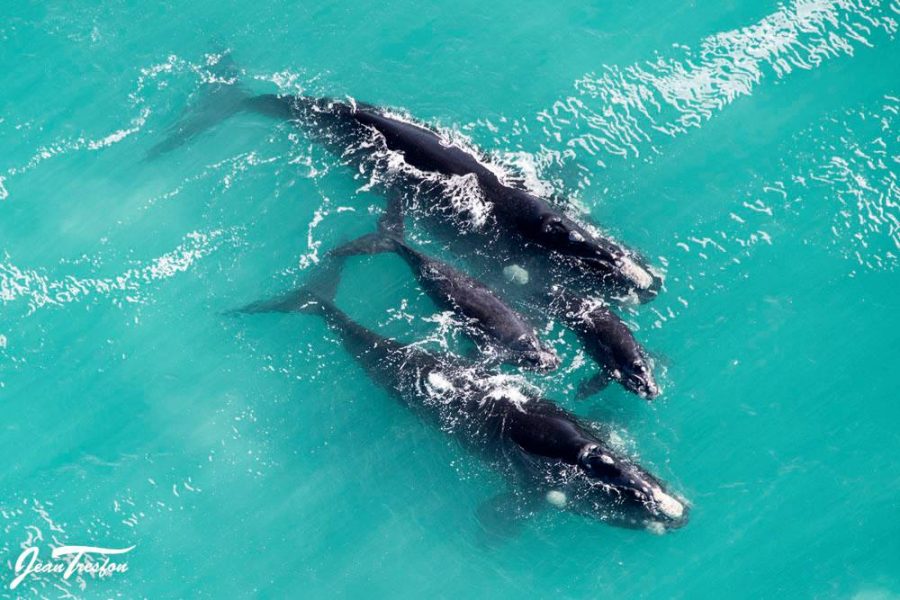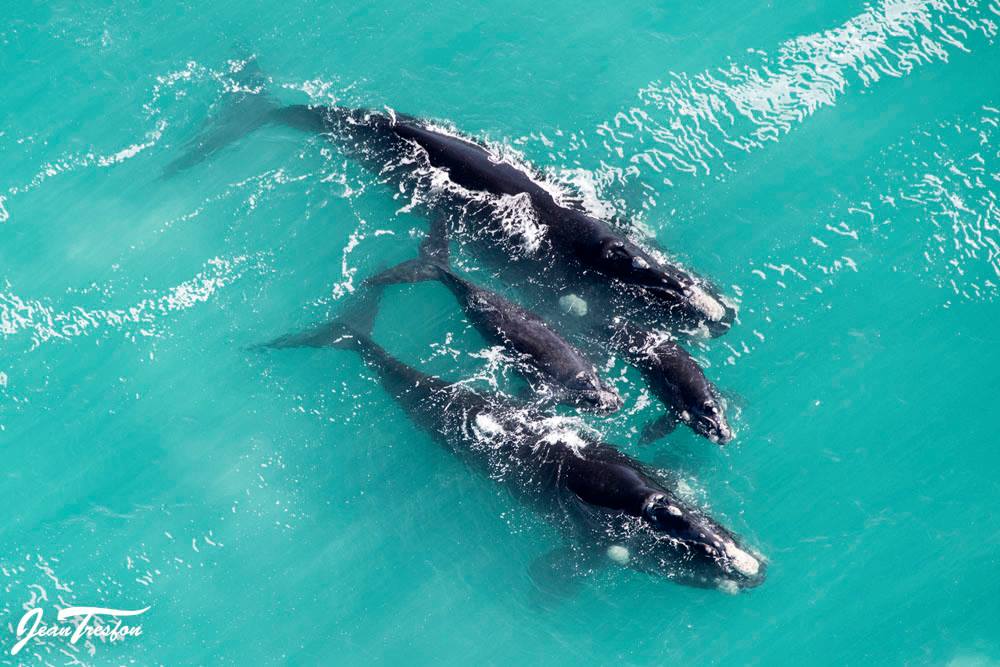
Good News as Over 1,300 Whales Frolic Along South African Coast
With all the bad news and negativity in the media, especially when it comes to the state of our marine resources, it’s great to be able to share something rather more uplifting… writes marine conservation photographer Jean Tresfon. On Saturday, with a one day weather gap between frontal systems along the Cape south coast it […]

With all the bad news and negativity in the media, especially when it comes to the state of our marine resources, it’s great to be able to share something rather more uplifting… writes marine conservation photographer Jean Tresfon.

On Saturday, with a one day weather gap between frontal systems along the Cape south coast it was the perfect opportunity to conduct an aerial whale survey for the Mammal Research Institute Whale Unit.
Early in the morning, wearing multiple layers of warm clothing plus a flight suit, gloves and windbreaker, I lifted off from Morning Star Airfield into the crisp clear air.
The farm fields were covered in a light frost as I passed overhead on my way to the coast at Hawston where I landed to collect whale scientist Chris Wilkinson.

After lifting off again we encountered the first southern right whales almost immediately, hardly surprising since the area between Hermanus lagoon mouth and De Kelders is one of the known hotspots for these gentle giants.
The area yielded a count of 107 whales, 41 cow/calf pairs and 25 unaccompanied adults. There were a few more whales at Pearly Beach, Die Dam and Agulhas and then another big group between Struisbaai and Arniston.

The next hotspot was at the De Hoop Collection Nature Reserve, from Skipskop Point to Lekkerwater, where we spotted an incredible 1,116 whales, or 558 cow/calf pairs, highlighting the fact that Koppie Alleen is without question the most important nursery area for southern right whales on the South African coast.

There were also several large great white sharks swimming amongst the whales and calves. From here to Cape Infanta there were quite a few more mothers & calves spread out along the coast and then another 60 whales in St. Sebastian Bay, clustered mainly around the Breede River mouth and further east towards the Duiwenhoks River mouth.

We terminated the survey at Witsands but could still see many more southern rights along the coast further to the east! After landing near Infanta to refuel the gyrocopter and grab a quick bite, we set off again, this time in the opposite direction and with more opportunity to get some images since we were finished with the count.
We also spotted both bottlenose and humpback dolphins, plenty of cape fur seals and even a few bait balls on the way back.

After dropping Chris back at Hawston I climbed up to 4000ft, crossing the mountains at Sir Lowry’s Pass in a rising westerly wind before dropping back down and heading home after nearly 7 hours in the air.

Later on I received a message from Els Vermeulen, head of the Whale Unit, to let me know the final numbers… 661 cow/calf pairs plus 25 unaccompanied adults, for a total of 1,347 southern right whales counted between Hawston and Witsands!
This is almost exactly triple the amount of whales counted at nearly the same time (1st week of Sep) in the same area in 2017, and a new all time record for southern right whales counted along our coast!
Big thank you to all who made the survey possible, especially African Wings who displayed amazing airmanship and graciously halted one of their tours so we could move through the area, and as always to Michael Raimondo from Green Renaissance.
By Jean Tresfon. Please view the original post here.
WATCH Southern Right Whales in Hermanus yesterday:
https://www.facebook.com/SAPeople/posts/10155445245266949?__xts__%5B0%5D=68.ARBWP_f6BzLA1Y_zYIcq0q1TZsmpiypPPFfPyPgUOV47xxyaFw2wydadOz6IqLIl-btoCYvNk9I-TY8CvojI_Hibvhy8u6Uc9SB7Uw5msg5d_lWi2sAAcK0IkXOGR8DEaAflzJ7TqAex&__tn__=-R
View Jean Tresfon’s original post here:
https://www.facebook.com/JeanTresfonPhotography/posts/1860576960692590?__xts__%5B0%5D=68.ARDz1k-spuzcg9Ms1xeBG7Ng13emSejOKMSR27t6LXvxHNBIlY-kD9-W7mWjOIF1usWBgwtfDSln9VJUur7ZFPDDWQ3Tn4XaIh5TiPZcA_cO_1TA8Kmjf2uyYoLgBhykEEibhRMb-d8Y&__tn__=-R
JEAN TRESFON is a South African marine conservation photographer who specialises in aerial and underwater photography. He flies several times a week specifically to keep tabs on our South African marine wildlife and regularly assists the authorities with shark and whale spotting.
To see more of Jean Tresfon’s photos and updates: